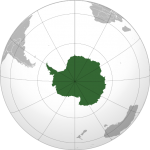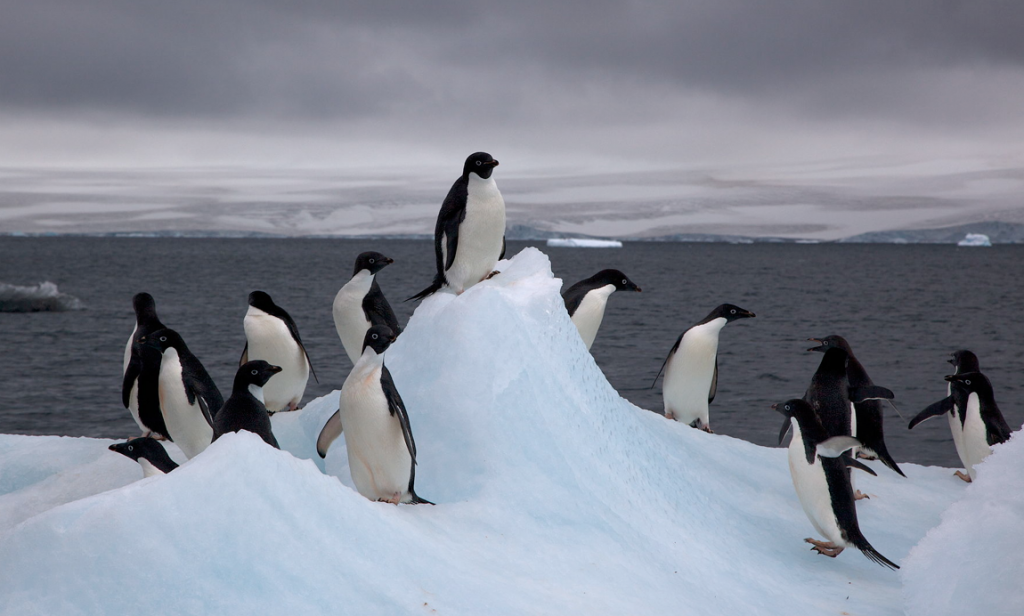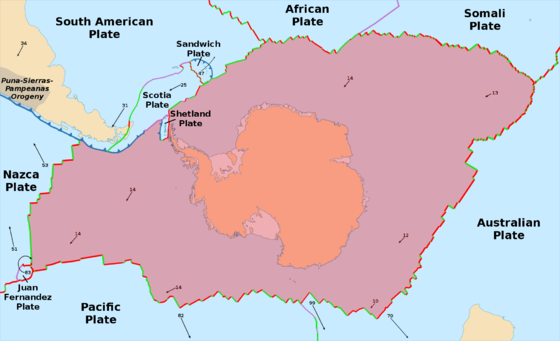The existence of a mysterious, “southern land” was not confirmed until the early 1820’s when British and Russian expeditions began exploring the Antarctic Peninsula and the Antarctic Circle. Not until 1840 was it established that Antarctica was indeed a continent and not just a group of islands. Following World War II, a number of countries set up stations, camps, and refuges to support scientific research in Antarctica.
 Antarctica is Earth’s southernmost continent surrounded by the Southern Ocean and is located at 90º 00′ S latitude and 0º 00′ E longitude at the South Pole where the Sun shines constantly for 6 months and then the Sun is down for 6 months. It is the 5th largest continent by size, and is the coldest, driest, and windiest place on Earth. Some 98% of Antarctica is covered by ice.
Antarctica is Earth’s southernmost continent surrounded by the Southern Ocean and is located at 90º 00′ S latitude and 0º 00′ E longitude at the South Pole where the Sun shines constantly for 6 months and then the Sun is down for 6 months. It is the 5th largest continent by size, and is the coldest, driest, and windiest place on Earth. Some 98% of Antarctica is covered by ice.
Antarctica is not a country, but a geographic land mass with no government, economy, or citizens. As of 2016, about 135 people live there permanently, and anywhere from 1,000 to 5,000 people reside temporarily throughout the year at research stations.
The Antarctic Treaty System that 53 countries are part of sets aside Antarctica as a scientific preserve, and bans military activity on the continent.
Explore Antarctica:
Ducksters: Antarctica Geography
Brittanica: Antarctica
Wikipedia: Antarctica
The History and Activity of the Americans in the Antarctic
The United States Antarctic Program

Wildlife in Antarctica
Animals that live in Antarctica

Antarctic Plate
Camping and Deep Field Operations in Antarctica
Research Stations in Antarctica
Ice Shelves are found in Antarctica.

Expedition Map
Library of Congress: Maps of Antarctica
Roald Amundsen – a Norwegian explorer of polar regions, led the Antarctic expedition of 1910–12 which was the first to reach the South Pole, on December 14, 1911. Amundsen disappeared with five crew members on June 18, 1928 while flying on a rescue mission in the Arctic.
The Amundsen–Scott South Pole Station is the U.S. Scientific Research Station
The Antarctic Treaty System that 53 countries are part of makes Antarctica a scientific preserve, establishes freedom of scientific investigation, and prohibits military activity on the continent.
Actual Antarctic Treaty
The Antarctic Sun: News about Antarctica
Documentaries:
Under the Antarctica
What Scientist are Seeing Over Antarctica
Megastructures – New South Pole Station (National Geographic Part 1)
Activities:
1. Do the Antarctica Word Search (printable)
2. Use your research skills to create a presentation about the current science projects happening in Antarctica or about the wildlife that inhabits the continent.
3. Color the Penguin Coloring Page or draw your own picture of an animal that lives in Antarctica. Send your artwork to share in the Multi-Purpose to: info@discoveryk12.com
4. Print and do the Antarctica Map Worksheet.
